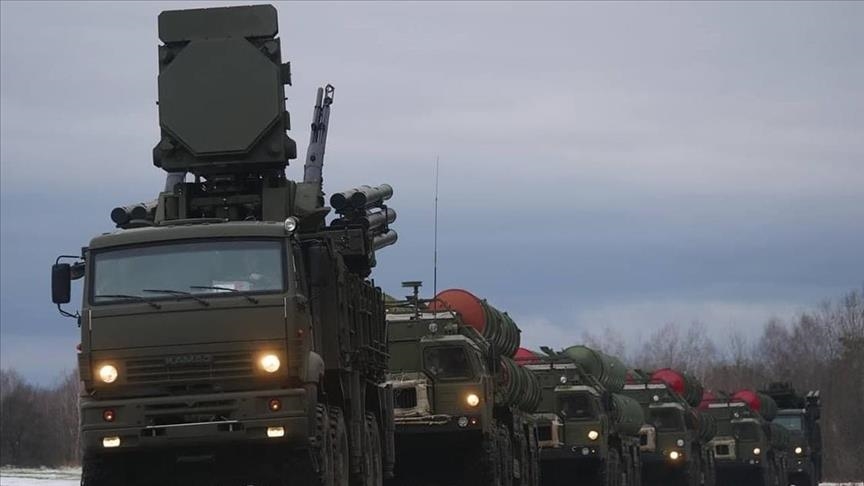•An old idea acquires new dimensions in a globalised world
In 2014 mysterious “little green men” without military insignia emerged in Crimea, and wrested the peninsula from Ukraine with hardly a shot being fired. Soon after, in eastern Ukraine, a motley collection of armed thugs and Russian forces took over enclaves in the region of Donbas, claiming to seek independence. These events, and many of the murky actions attributed to Russia since then—from cyber-attacks to assassinations abroad, meddling in elections in the West, and now the threat of invasion—have been labelled as forms of “hybrid war”. What does the term mean and how has it evolved?
Subterfuge and surprise are as old as warfare itself. “The Art of War”, a treatise thought to date to the 5th century BC and attributed to Sun Tzu, declares that “to subdue the enemy without fighting is the acme of skill”. The modern concept of hybrid war was popularised by Frank Hoffman, a former US Marine and a defence scholar, in a paper from 2007 analysing chaotic conflicts in Iraq, Afghanistan and elsewhere, in which tactics changed and the line between civilians and combatants was blurred. (He, in turn, attributed the term to another writer’s master’s thesis from 1998.) Mr Hoffman wrote: “Hybrid Wars incorporate a range of different modes of warfare, including conventional capabilities, irregular tactics and formations, terrorist acts including indiscriminate violence and coercion, and criminal disorder.” This variety of actions could be the work of the same actor.
He was thinking mainly of insurgent groups and weak states such as Iran. Hizbullah, an Iranian-sponsored Shia militia-cum-party in Lebanon, is one archetype of the hybrid combatant. To the extent that Mr Hoffman mentioned Russia, a powerful state, it was to cite its experience of fighting hybrid insurgents in Chechnya. In his view, hybrid war is essentially a form of asymmetric warfare, in which a combatant seeks to avoid the strengths of a more powerful adversary.
Russian strategists, for their part, speak of “non-linear warfare”, a term popularised in a dystopian short story by one of Mr Putin’s closest advisers, Vladislav Surkov, to mean a chaotic conflict of “all against all”. Another presumed godfather of unconventional methods is General Valery Gerasimov, Russia’s armed-forces chief. In an article in 2013, he wrote: “In the 21st century we have seen a tendency toward blurring the lines between the states of war and peace. Wars are no longer declared and, having begun, proceed according to an unfamiliar template.” These words, written a year before Russia deployed its “little green men” in Crimea, came to be seen as prophetic. Except that General Gerasimov was applying the idea to the West, which he blamed for fomenting the Arab spring of 2011 and “colour revolutions” in Russia’s periphery. A prosperous state, he noted, “in a matter of months and even days can turn into an arena of fierce armed struggle, become a victim of foreign intervention, plunge into the abyss of chaos, humanitarian catastrophe and civil war.”
Mark Galeotti, an expert on Russia, coined the idea of a “Gerasimov doctrine” but now regrets it. Russia’s methods, he argues, involve a mix of two sorts of “non-linear” war. The first involves the realisation “that modern technologies and modern societies mean that a shooting war will likely be preceded by and maybe even almost, but not quite, replaced by a phase of political destabilisation.” The second form is a contest short of actual war, in which Russia seeks to divide, demoralise and distract the West so that it cannot stop Russia’s attempt to re-establish a sphere of interest.
If Mr Hoffman’s original definition of hybrid warfare involved the mixing of different forms of actual fighting, over time “hybrid” has been used loosely to refer to lots of non-lethal forms of attack and subversion, eg, “hybrid actions” or “hybrid threats”. The European Centre of Excellence for Countering Hybrid Threats in Helsinki, established in 2017 jointly by NATO and the European Union, described such actions as “characterised by ambiguity as hybrid actors blur the usual borders of international politics and operate in the interfaces between external and internal, legal and illegal, and peace and war.”
Elisabeth Braw of the American Enterprise Institute, a think-tank, prefers a different taxonomy which draws the line at military action. She categorises acts below this threshold as “grey-zone aggression”, which she defines as “the use of hostile acts outside the realm of armed conflict to weaken a rival country, entity or alliance”. If these are mixed in with actual combat then they become hybrid warfare. “It has become fashionable to use hybrid war for anything that is a bit mysterious,” she argues, “In fact, every war is now hybrid because it has both military and non-military dimensions, such as propaganda and cyber.” Yet the grey-zone aspect is becoming more prominent because globalisation and interconnections offer many options for sowing chaos. It often comes with lower risk of retribution—in a cyber-attack, say, the perpetrator can be hard to identify conclusively. In this light, the West’s response in publicising Russia’s military build-up, releasing intelligence on its plans for false-flag and other operations to create a pretext for war, is in itself a grey-zone response intended to cause confusion in the Kremlin.
So how to characterise what is going on in Ukraine? For Ms Braw, the intensified fighting along the “line of control” between Ukrainian forces and separatists is “hybrid war”. Russia’s intimidation and subversion of the rest of Ukraine—including the threat of invasion that rattles confidence and weakens Ukraine’s economy—still counts as “grey-zone aggression”. If Mr Putin decides his menaces are not enough and orders his tanks into combat, it becomes “hybrid war”—or perhaps just plain “war”.
Credit | The Economist

